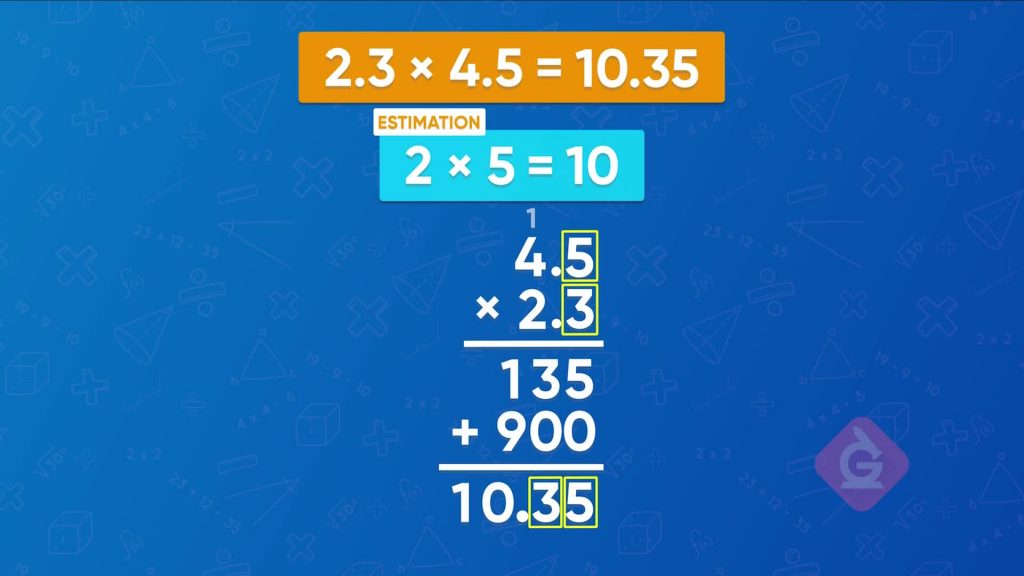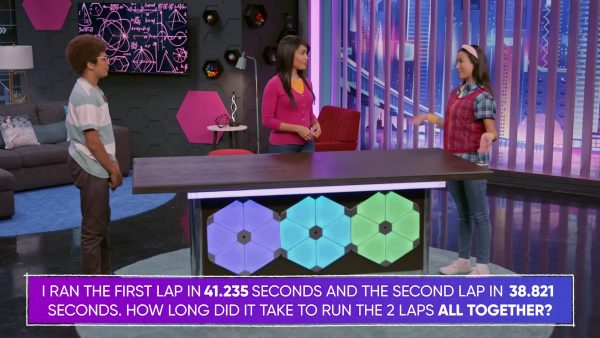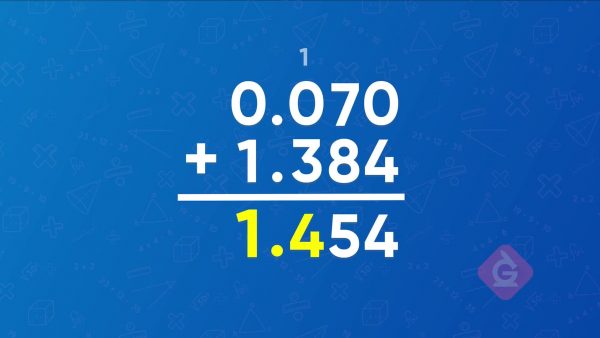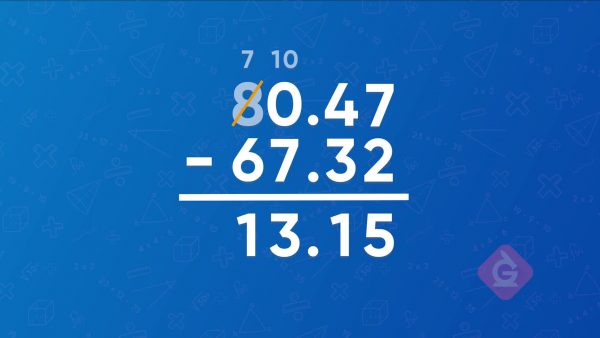
Adding, subtracting, multiplying, and dividing with decimals is not very different from operations with whole numbers. If we follow the standard algorithms, pay attention to place value, and think about where the decimal point should end up, we can find the answers.
To better understand the standard algorithm with decimals…
LET’S BREAK IT DOWN!
Adding decimals

Emily is on the track team. She runs the first lap in 41.235 seconds, and the second lap in 38.821 seconds. Add to find out how long it took her to run both laps together. Line up the two numbers so that the place values are aligned, and then add one place value at a time, starting with the digits that have the least value. When a sum is 10 or greater, regroup a 1 to the next place value. 41.235 + 38.821 = 80.056 seconds. Now you try: 1.724 + 2.193 = ?
When the numbers have different place values

To add 0.07 + 1.384, we still have to line the numbers up by place value. 0.07 doesn’t have a digit in the thousandths place, so it is easiest to start by aligning the decimal points. Now all our place values are aligned, and we add a 0 at the end of 0.07 to make 0.070. That does not change the value but makes the numbers easier to add. 0.07 + 1.384 = 1.454. Now you try: 2.04 + 10.123 = ?
Subtracting decimals

You had $80.47. You spent $67.32. Subtract to find how much money you have left. Start by lining up the numbers by place value, with the greater number on top. Then subtract the digits, starting with the place value on the right. When we get to the ones place, there is 0 – 7. Since there are not enough ones to subtract 7 ones, regroup 1 ten as 10 ones. Now we have 10 – 7 = 3. The tens place is now 7 instead of 8. Finally, subtract the tens. The final answer is 13.15, which means you have $13.15 left. Now you try: 21.90 – 15.12 = ?
Multiplying decimals

You feed your dog 2.3 cups of food a day, and you need to bring enough food for a 4.5-day trip. Start by multiplying the digits, ignoring the decimal points, using the standard algorithm. 23 × 45 = 1,035. To decide where to put the decimal point, find the total number of decimal places in the original numbers: 2. The decimal point goes two places from the right. The answer is 10.35. Now you try: 1.7 × 1.5 = ?
Dividing decimals

You want to divide 3.42 liters of soup into bowls that each hold 0.9 liter. Divide 3.42 by 0.9 to find the number of bowls you can fill. Change the problem into an equivalent problem with a whole number divisor. Multiply the divisor and dividend both by 10 to get 34.2 ÷ 9. Now divide using the standard algorithm for division. 34.2 ÷ 9 = 3.8. You can fill 3 bowls and 0.8 of a fourth bowl. Now you try: 2.24 ÷ 0.4 = ?
STANDARD ALGORITHM WITH DECIMALS (ALL 4 OPERATIONS) VOCABULARY
STANDARD ALGORITHM WITH DECIMALS (ALL 4 OPERATIONS) DISCUSSION QUESTIONS
If you want to add 3.51 + 5.21, how should you line them up?
What if you want to add numbers that have a different number of decimal places, like 2.5 + 4.123?
If you want to multiply 4.39 × 5.1, should you line the numbers up by place value?
How do you know where to put the decimal point at the end of multiplying?
What should you do before starting long division on numbers that have decimal points?
Skip, I will use a 3 day free trial
Enjoy your free 30 days trial
We use cookies to make your experience with this site better. By using this site you agree to our use of cookies. Click "Decline" to delete and block any non-essential cookies for this site on this specific property, device, and browser. Please read our privacy policy for more information on the cookies we use.Learn More
We use cookies to improve your experience. By using this site, you agree to our use of cookies. Click "Decline" to block non-essential cookies. See our privacy policy for details.Learn More





